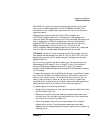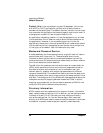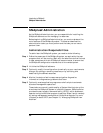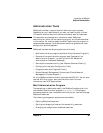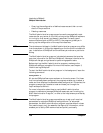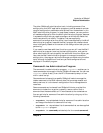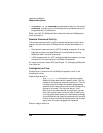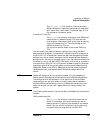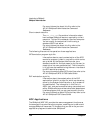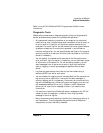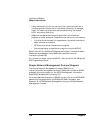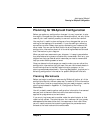
Chapter 2 103
Introduction to SNAplus2
SNAplus2 Administration
The sna_domn.cfg file contains information about
SNAplus2 domain resources (resources not associated
with a particular local node). The master copy of this
file resides on the master server.
Invokable TP data file
The sna_tps file contains information that SNAplus2
needs to start invokable (target) TPs, and can also
provide other information (such as the level of security
required to access the TP). This file resides on the
computer where the TPs run.
For more information about this file, see “Defining
TPs”.
You can modify the node and domain configuration using the Motif
administration program, the command-line administration program, or
the NOF API. All of these tools make the required changes to the node
configuration file or domain configuration file as appropriate. Because
configuration information is stored as plain text; you can also modify the
file directly using a standard ASCII text editor such as vi, or by means
of a shell script using HP-UX utilities such as awk or sed. Any changes
to configuration files using a text editor must be made before starting
SNAplus2. Refer to the HP-UX SNAplus2 Administration Command
Reference for more information about SNAplus2 configuration file
format.
NOTE SNAplus2 configuration is a dynamic process; it is not necessary to
define the entire configuration before starting the SNAplus2 software.
The configuration file provides an initial definition of the available
resources, but you can add, delete, or modify resources as necessary
while the SNAplus2 software is running. SNAplus2 stores the current
definition so that you can use it again when you need to restart the
system.
The following files contain information about the SNAplus2 client/server
network:
SNA network data file
The sna.net file contains information about which
server is the master, and which servers can act as
backup servers. This binary file resides on the master
server. You can modify the contents of this file using
the administration programs or the NOF API.



